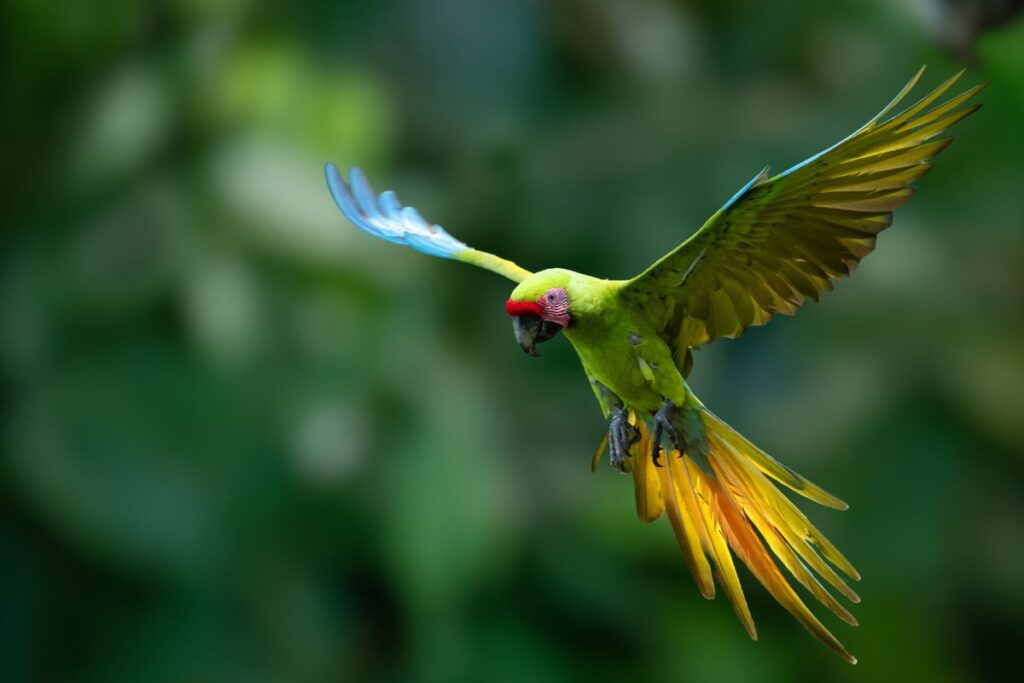Great Green Macaws: Engaging Communities in Conservation
Panama Wildlife Conservation (PWCC) is dedicated to conserving biodiversity, animal species and their habitats, including the Great Green Macaw, through collaboration with residents and organisations in Panama. In addition to field conservation work the team is involved in carrying out education and outreach programs, promoting ecotourism, encouraging the protection of roosting and breeding habitat and producing educational materials about the macaws.
ADOPTA Bosque is dedicated to the conservation of Panama’s unique ecosystems. The team works with indigenous territories La Marea and Bajo Lepe in the Darién region, which borders Colombia and may be important strongholds for Great Green Macaws. ADOPTA biologists engage local communities in education and awareness programs to change perceptions of the macaws, encourage ecotourism, cottage industries and other initiatives. The team involves local people in citizen science work such as nest box construction, installation and monitoring, restore and protect crucial forest, and collaborate in regional conservation efforts with Colombia and Costa Rica.
In 2010, WPT partner Ara Manzanillo, then The Ara Project, initiated a Great Green macaw reintroduction project in the South Caribbean region of Costa Rica to establish a self-sustaining Great Green Macaw population there and have the group eventually link with the remaining populations in northern Costa Rica. Among other conservation activities, the team engages people in learning about and protecting the macaws the team provides education and awareness to communities, students and conservationists.
Status: IUCN Critically Endangered / CITES Appendix I
Population: 500-1000 mature individuals, decreasing.
Threats: This macaw is extremely sensitive to habitat disturbance. Also hunted for food in some areas and caught for the wild-bird trade.
Range: A.a. ambiguus: Caribbean lowlands of E Honduras to NW Colombia. A.a. guayaquilensis: W Ecuador, Esmeraldas; smaller numbers in the Cordillera de Chongon-Colonche, Guayas.
Natural history: The Great Green Macaw is found at altitudes up to 600 m (1968 ft) in Costa Rica and 1000 m (3280 ft) in Panama. It is seen in pairs or small groups foraging on seeds, nuts, fruits, flowers, bulbs, roots and bark. Almendro tree seeds are a major part of the diet. Breeding is May-October in Ecuador, dry season (December-April) in Costa Rica. Nest is in a tree hollow.

